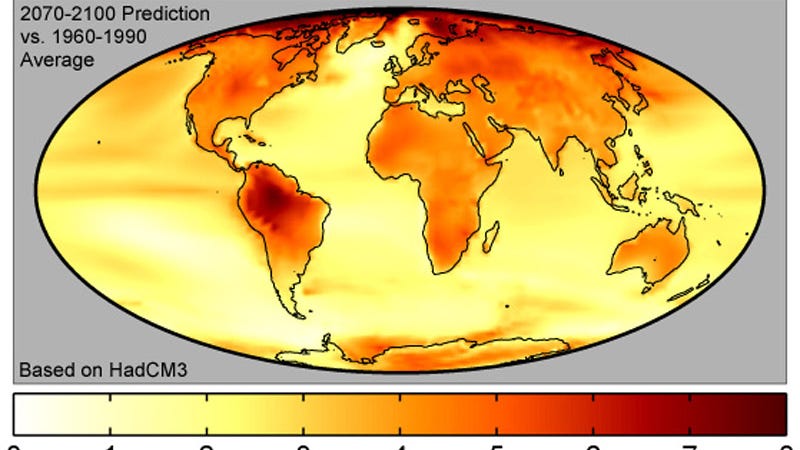
Intense droughts can lead to an increase in malnutrition. Hotter summers and more frequent fires will lead to more cases of heat stroke and deaths, and to higher levels of near-surface ozone and smoke, which would cause more ‘code red’ air quality days. More intense rains and hurricanes and rising sea levels will lead to more severe flooding and potential loss of property and life. As tropical temperature zones expand, the reach of some infectious diseases, such as malaria, will change. Hardest hit will be those living in low-lying coastal areas, and residents of poorer countries who do not have the resources to adapt to changes in temperature extremes and water resources. The changes to weather and ecosystems will also affect people more directly. The IPCC estimates that 20-30 percent of plant and animal species will be at risk of extinction if temperatures climb more than 1.5° to 2.5☌.

Those species, and in some cases, entire ecosystems, that cannot quickly migrate or adapt, face extinction. To survive the extreme temperatures, both marine and land-based plants and animals have started to migrate towards the poles. In some ecosystems, maximum daily temperatures might climb beyond the tolerance of indigenous plant or animal. Once the growing season ends, shorter, milder winters fail to kill dormant insects, increasing the risk of large, damaging infestations in subsequent seasons. This means that plants need more water to keep growing throughout the season or they will dry out, increasing the risk of failed crops and wildfires. Warmer temperatures also extend the growing season. See Buzzing About Climate Change to read more about how the lifecycle of bees is synched with flowering plants. This mismatch can limit the ability of both pollinators and plants to survive and reproduce, which would reduce food availability throughout the food chain. The shift in seasons may already be causing the lifecycles of pollinators, like bees, to be out of synch with flowering plants and trees. Migrating animals have to start seeking food sources earlier. This change in the growing season affects the broader ecosystem. Spring is coming earlier in both hemispheres.

The growing season in parts of the Northern Hemisphere became two weeks longer in the second half of the 20th century. Warmer temperatures have already shifted the growing season in many parts of the globe. More importantly, perhaps, global warming is already putting pressure on ecosystems, the plants and animals that co-exist in a particular climate zone, both on land and in the ocean. If the melting accelerates, the increase in sea level could be significantly higher. Satellite measurements reveal that the Greenland and West Antarctic ice sheets are shedding about 125 billion tons of ice per year-enough to raise sea levels by 0.35 millimeters (0.01 inches) per year. As temperatures rise, ice will melt more quickly.

These sea level change predictions may be underestimates, however, because they do not account for any increases in the rate at which the world’s major ice sheets are melting. The Intergovernmental Panel on Climate Change (IPCC) estimates that sea levels will rise between 0.18 and 0.59 meters (0.59 to 1.9 feet) by 2099 as warming sea water expands, and mountain and polar glaciers melt. Since 1993, NASA satellites have shown that sea levels are rising more quickly, about 3 millimeters per year, for a total sea level rise of 48 millimeters (0.16 feet or 1.89 inches) between 19. And the rate of sea level rise is accelerating. The problem is serious because up to 10 percent of the world’s population lives in vulnerable areas less than 10 meters (about 30 feet) above sea level.īetween 18, the sea level increased by 1.7 millimeters per year on average, for a total sea level rise of 221 millimeters (0.7 feet or 8.7 inches). The weather isn’t the only thing global warming will impact: rising sea levels will erode coasts and cause more frequent coastal flooding. Heat waves, droughts, and intense rain events have increased in frequency during the last 50 years, and human-induced global warming more likely than not contributed to the trend. It is impossible to pin any single unusual weather event on global warming, but emerging evidence suggests that global warming is already influencing the weather.


 0 kommentar(er)
0 kommentar(er)
